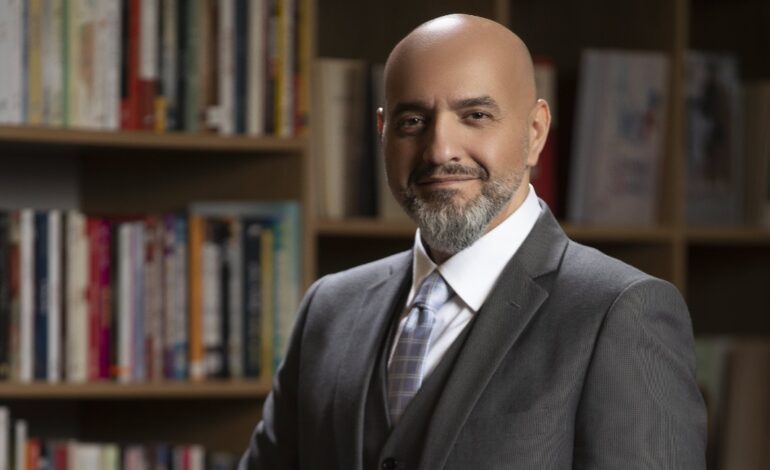
A genuine smile, when your lips sweep upward and your sparkling eyes crinkle, is a beautiful thing. It signals joy and human connection.
For some people, that joy might be affected by a condition known as a gummy smile. It’s when your smile reveals more of your gums than you’d like. In clinical terms, it’s called excessive gingival display.
Whether you consider your smile “too gummy” is largely a matter of personal aesthetics. But you should know that it’s fairly common.
Some experts estimate that as many as 10 percent of 20- to 30-year-old adults consider their smiles gummy. Plus, more women than men believe their smiles show too much of their gumline.

What’s considered a gummy smile?
No exact definition exists for a gummy smile. In reality, it largely rests in the eye of the beholder. Your perception of your gumline could be affected by:
the height and shape of your teeth
the way your lips move when you smile
the angle of your jaw compared with the rest of your face
Generally speaking, 3 to 4 millimeters of exposed gumline is considered to be disproportionate, resulting in a gummy smile.
What causes a gummy smile?
According to research, several factors can contribute to a gummy smile. Let’s take a closer look at some of the most common causes.
Differences in the growth of your teeth
Sometimes the way your adult teeth grow in can result in a gummy smile. Though this varies from person to person, a small 2014 study found that it may be a family trait.
If your gums covered more of your teeth’s surface when they came in — a condition called altered passive eruption — it might have led to a gummy smile.
If the teeth in the front of your mouth grew in too far, or overerupted, your gums might have grown too far as well. This condition is known as dentoalveolar extrusion.
A gummy smile can also occur due to a condition called vertical maxillary excess. This is when the bones of your upper jaw grow longer than their typical length.
Lip differences
A gummy smile can happen when your upper lip is on the shorter side. And if your lips are hypermobile — which means they move dramatically when you smile — they might expose more of your gumline.
Medications
Some medications can cause your gums to grow too much around your teeth. This is known as gingival hyperplasia.
Drugs that prevent seizures, suppress your immune system, or treat high blood pressure could cause the overgrowth of your gums.
In this case, it’s important to treat the condition. If untreated, the clinical overgrowth of gums can lead to periodontal disease.
Treatment options
Oral surgery
If too much of your gums cover the surface of your teeth, your dentist might recommend a procedure known as a gingivectomy. This is also known as gum contouring and involves the removal of extra gum tissue.
What does gingivectomy involve?
When you have a gingivectomy, your periodontist or oral surgeon will give you a local anesthetic to keep you from feeling pain during the procedure.
The periodontist or surgeon will then use a scalpel or laser to trim or reshape your gums to reveal more of your teeth’s surface.
After the surgery, your gums are likely to bleed and feel sore for about a week.
You might have to return for more than one session.
If your insurance company considers the gingivectomy elective or cosmetic, you may have to pay the full cost for the procedure. This could range from $200 to $400 per tooth.
The good news is that the results are likely to be long-lasting or even permanent.
Lip repositioning surgery
If your lips are the cause of your gummy smile, your doctor may suggest lip repositioning surgery. The procedure changes the position of your lips relative to your teeth.
It’s done by removing a section of connective tissue from the underside of your upper lip. This will prevent the elevator muscles located in the area of your lip and nose from lifting your upper lip too high above your teeth.
What does lip repositioning surgery involve?
The surgery is performed under local anesthesia so you won’t feel pain.
Once your mouth is numb, the periodontist will make two incisions on the underside of your upper lip and remove a section of connective tissue from the area.
After the connective tissue is removed, the periodontist will stitch up the incisions.
The procedure lasts from 45 minutes to 1 hour.
After the procedure, your periodontist may prescribe antibiotics and pain medication for you.
Recovery typically takes about a week.
According to a 2019 scientific review, patients who had this procedure were still happy with the results 2 years after the surgery.
In many cases, the results are permanent, but a relapse could occur.
The cost of this procedure can vary depending on your doctor and where you live. On average, you can expect to pay between $500 and $5,000 for lip repositioning surgery.
Orthognathic surgery
If your jaw is part of the reason you have excessive gingival display, your dentist or oral surgeon may recommend orthognathic surgery. This procedure will balance the length of your upper and lower jaws.
A lot of planning goes into this treatment approach.
You may need to meet with both an orthodontist and a maxillofacial surgeon. You will probably have one or more scans taken of your mouth to determine where your jaw has grown too far.
Sometimes, before getting jaw surgery, you’ll need to wear braces or other orthodontic devices to make sure your teeth and the arches in your mouth are aligned well.
What does orthognathic surgery involve?
With this surgery you’ll be under general anesthesia, which means you won’t be awake for the procedure.
The surgeon will remove a section of bone from your upper jaw to balance the length of your upper and lower jaws.
The jawbone will be reattached with tiny plates and screws. If your lower jaw sits too far back, it may have to be adjusted too.
After the surgery, you’ll likely remain in the hospital for 2 to 4 days so your oral surgeon can monitor the results.
You may have to wear elastics to hold your jaw in position while it heals.
Healing typically takes 6 to 12 weeks.
The cost of orthognathic surgery is much higher than that of less invasive procedures. If your insurance doesn’t cover this procedure, it could cost you between $20,000 and $40,000.
If your surgery is medically necessary to prevent problems with your bite or your jaw, though, your insurance may cover the cost.
To be Continued






